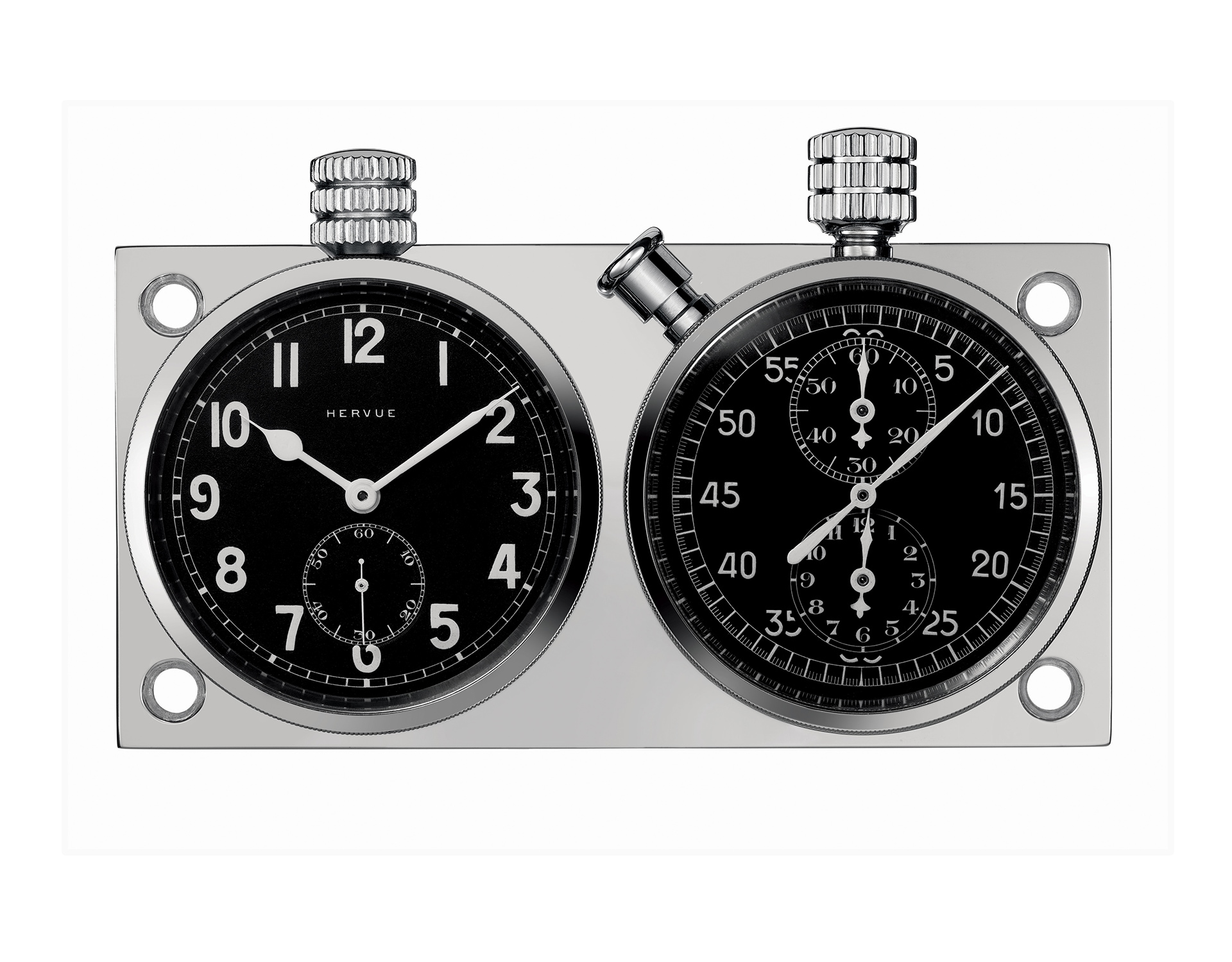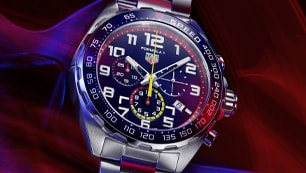


1933 TO 1958
BROADER AND DEEPER
The era opened with Heuer having a catalog of stopwatches and pocket chronographs, but only a limited selection of wrist chronographs.
In the next decades, Heuer vastly expanded the range of wrist chronographs, to become the world leader in these instruments.

The Dashboard Autavia
In 1933, Heuer introduced the “Autavia”, a name that would continue in its catalog for decades to come. The Autavia 12-hour stopwatch was a dashboard timer to meet the toughest AUTomotive and AVIAtion requirements. The Autavia was used as a single timer or it could be paired on a back-plate with the Hervue 8-day clock. Racers and pilots, as well as gentlemen sportsmen, selected the instruments that best-suited their preferences.

The Flieger
Heuer’s Flieger (pilots) chronograph was a two-register chronograph in a chrome-plated case. The Flieger’s rotating coin-edge bezel included a prominent triangular marker, which was used to mark a time (for example, time over target). Early models had a single pusher for the start-stop-reset sequence. The later version added a second pusher, so that the pilot could stop and restart the timer, without resetting it.
1940
HEUER ON EVERY DIAL
Historically, Heuer produced many watches and chronographs that either had no brand name on the dial or, in some instances, showed only the name of the distributor.
From 1940, Heuer would put its name on every dial, with the movements also being marked “Ed. Heuer”.
The Heuer brand provided a strong advantage in selling the company’s range of chronographs.

Time for Three Registers
Heuer moved from two register chronographs to three register chronographs in the early 1940s, with the third recorder providing timing up to 12 hours. Enhanced versions of the 12-hour movements were used for triple calendar chronographs (indicating the day, date and month), as well as moon phase chronographs.

Beyond the Chronograph
By the late 1940s, Heuer would move beyond the traditional chronograph to offer innovative watches for sportsmen, travelers and other enthusiasts. These watches tracked the tide, the moon, speed over a measured distance or even a second time zone.

The Solunar
A colorful new watch was called the “Solunar”. Hunters, fishermen and sailors may derive important information by tracking the phase of the moon, as well as the time of high and low tides. Jack Heuer worked with his professor to make the calculations required to display both “lunar” time and the usual time of day (“solar” time).

The Mareographe
Heuer soon added the rotating tide disc of the Solunar to a standard three-register chronograph, to produce the “Mareographe”. The sportsman could track the high and low tides, or the phases of the moon, on a chronograph with a 12-hour recorder. The Mareographe would occupy a variety of Heuer’s most rugged water resistant cases, being produced into the 1970s. Heuer would make versions of the Mareographe for Abercombie & Fitch (called the “Seafarer”), as well as Orvis (called the “Solunagraph”).

Other Special Models
In addition to the Solunar and Seafarer models, Heuer produced a wide variety of innovative watches and chronographs for sportsmen, travelers and other enthusiasts. The Twin-Time watch allowed the traveler to track the time in a second time zone, while the Auto-Graph chronograph allowed the racer to determine his speed over a known distance.

The Ring-Master
In 1957, Heuer introduced an entirely new type of stopwatch, with the owner inserting brightly-colored, interchangeable rings to time different events. Each ring was a different color and incorporated a different scale. For example, an orange scale was marked for the rounds and breaks in a boxing match, a yellow ring had a countdown scale for timed games and yacht races, and a green scale showed decimal minutes for rally timing.







